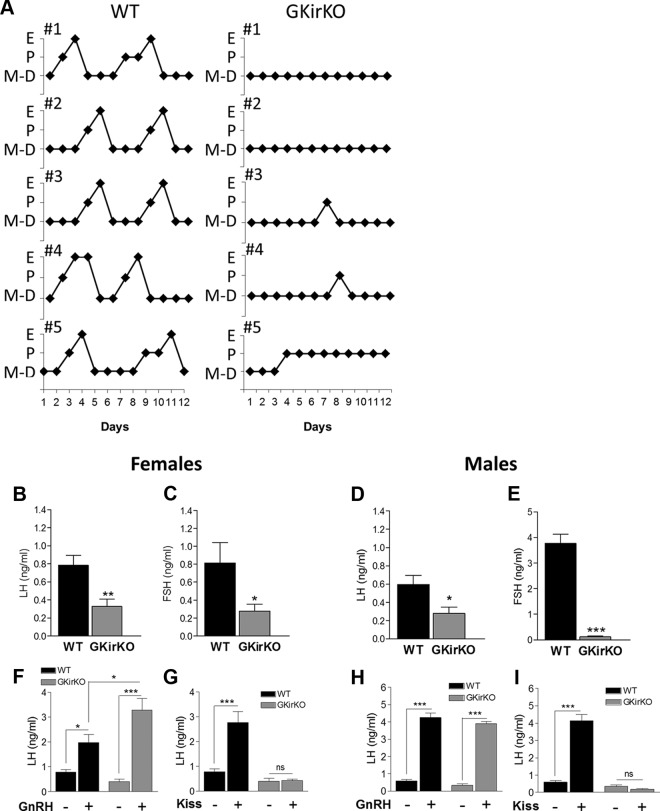Figure 3.
GKirKO mice have an abnormal estrous cycle. A, Graphic representation of the estrous cycle in WT and GKirKO mice determined by vaginal cytology followed for 12 days (n = 5). B–E, Baseline serum LH and FSH levels in female (left, n = 6–8) and male (right, n = 3–10) mice. Assay detection limit = 0.048 ng/mL. F and H, GnRH stimulation test. Evaluation of serum LH levels 20 minutes after injection of GnRH agonist (0.1 ng/g via ip). Increased serum LH levels in mice treated with GnRH agonist (indicated as GnRH +) was observed in both genders of WT and GKirKO (n = 7–9). G and I, Kisspeptin stimulation test. Evaluation of serum LH levels 10 minutes after injection of kisspeptin-10 (1 nmol ip). No LH response to kisspeptin (indicated as Kiss +) was observed in female (n = 7–8) or male (n = 3–10) GKirKO mice. Significant differences compared with saline-treated control groups (indicated as GnRH − or Kiss −): *, P ≤ .05; **, P ≤ .01; ***, P ≤ .001. Two-way ANOVA showed an interaction between genotype and treatment in F (P ≤ .05), G (P ≤ .01), and I (P ≤ .001), an effect of treatment in F (P ≤ .01), G (P ≤ .05), H (P ≤ .001), and I (P ≤ .001) and an effect of genotype in G (P ≤ .001) and I (P ≤ .001).

